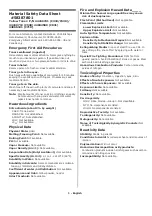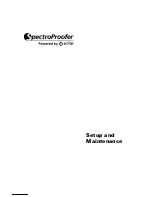
10
Color Temperature
Consistent and Constant
The problem:
With the rare exception of units costing many thousands of
dollars, flash lighting packs, up to now, do not control the color temperature of
the light. The color temperature typically decreases by over 100 degrees Kelvin
for every f-stop of power reduction. Over a 6-stop adjustment range, this results
in a color temperature decrease of over 600K. Even units that have a small 3-
stop range can produce significant color shifts of over 300 degrees. This can
result in much larger shifts between two light sources than film can correct.
(Kodak recommends less than 200 degrees shift between light sources for their
5500-degree daylight film.)
The solution:
Photogenic has created an affordable solution to this problem.
The new Solaris PowerLights provide consistent and constant color temperature
across their amazing 8-stop range. Be wary of claims of
consistent
color
temperature at only one power level. This is not the same as
constant-color
temperature over all power levels. Both are necessary to provide the perfect
exposure we all strive for. The light produced by the new Solair is
consistent &
constant
. Every time you key in a desired power level on the digital input, you
will receive the same amount of light as you obtained previously, and at the
same color temperature. The light produced by the new Solair is constant-color.
No matter what power setting you select, the light will be the same color
temperature. Using the standard color corrected flash lamp; every subject will
be exposed to approximately 5400 degree Kelvin light, regardless of power
setting. This solves forever the problem of unbalanced power settings in your
studio, resulting in color temperature shifts in your pictures.
Flash Duration
The Solair PowerLights provide motion-stopping capability ranging from 1/250-
second flash duration at full power to 1/3700 at minimum power, eight stops
down. Unlike shutter speed, flash duration can be reported in different ways. It
is generally defined as the length of time light is produced above a certain power
level. Photogenic Solair measurements are reported at the 1/10 power level or t
= 0.1, instead of several other widely used methods.
While any point of the discharge curve can be utilized to measure the duration of
a flash, the most commonly used are 1/10, 1/3, and 1/2 of peak. ‘Doc’ Edgerton
[Edgerton, “Electronic Flash Strobe”, 1987, pg 30] recommended the 1/3-point
be used for duration measurements in order to approximate the power being
measured. While this has served the industry well for many years, the
commonly available integrating power meter gives the exact amount of power
delivered, and we no longer need to approximate this measurement. The 1/2










































